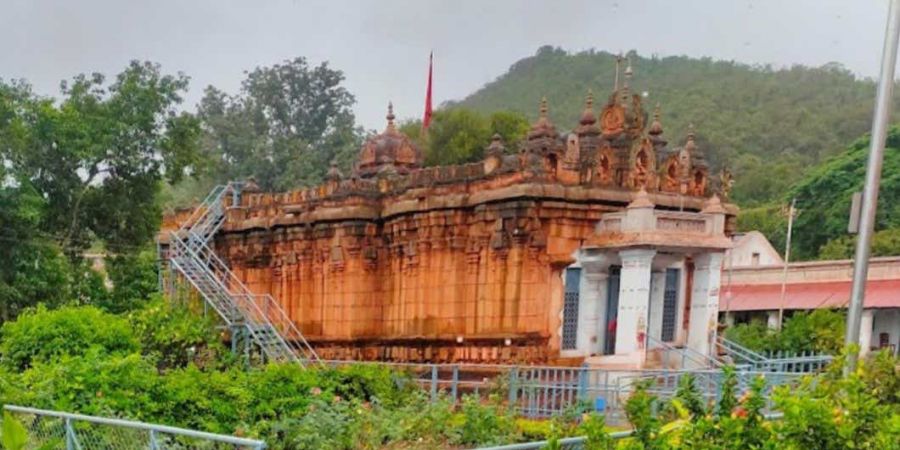

The Kumaraswamy temple is located within the Swamimalai forest range of the Krauncha Giri (hill), in the Bellary district of Karnataka, India. The temple lays around 10 kms from the town of Sandur in the Bellary district. The Krauncha Giri hill itself is shaped like an ellipse, with a pass cutting across it.
Parvati temple
The Parvati temple has a number of unusual features. It apparently belongs to the "middle phase" of Badami Chalukya architecture, also called the Vesara style by some, and "Karnataka Dravida" by Adam Hardy, who sees this Deccan style as a part of the Dravidian architecture of the south, distinct from the version that developed in Tamil Nadu. The temple has no mandapa, but a long antarala, over which is, according to Adam Hardy, "possibly the first use of a sukanasa in a Dravida temple". The vimana tower over the shrine is "a very unusual composition, strangely advanced-looking in the compression of horizontal layers, and in the sense of outsurge".
According to one account, the Parvati temple (which was originally called Kumaraswamy temple) was built by the Badami Chalukyas (7th -8th century) and has the image of Parvati as the main deity.
The temple currently called the Kumaraswamy temple (originally had Shanmukha as the main deity) was constructed during the rule of the Rashtrakutas (8th-10th century).
About The Temple
The Kumaraswami Temple is situated on south-west and is linked to the town of Sandur through road. The temple complex encompasses separate shines dedicated to Goddess Parvati and Lord Kumaraswami. The temple also houses a vigraha of Lord Ganesha, who is gaining popularity among the masses these days, even more than the main deity Kartikeya.
According to Legends, the Parvati temple was built by the Badami Chalukyas during the 7th to 8th century AD. This shrine has a vigraha of Goddess Parvati who is the main deity. This temple is a part of the Kumaraswamy temple (originally had Shanmukha as the main deity) which was built by the Rashtrakutas during the 8th-10th century AD. Both the parvathi temple as well as the Karthikeya temple stands as protected monuments of India under ASI. The temple was discovered later in the 15th century by the local rulers called the Ghorpades, from the dense forests of Swamimale hill.
Earlier, women were strictly prohibited from entering this hill shrine. Later in 1996, Murarirao Yeshwantrao Ghorpade lifted the ban on women. It is estimated that nearly 3,000 women have worshipped the deities at this temple, once the ban got lifted. The local rulers Ghorpades were much loved and respected by the natives. They had in fact declared the temple open to Harijans as early as the 1930s. On learning of this news upon his visit to Sandur in the year 1934, Mahatma Gandhi in one of his speeches proudly mentioned that "A small state in south India has opened the temple to the Harijans, the heavens have not fallen”
The Pampa Sarovar, Annual Fairs (JAATRAS) in Sandur is celebrated every year. Annual fairs are held in Kumarswami temple during the month of November every year.
